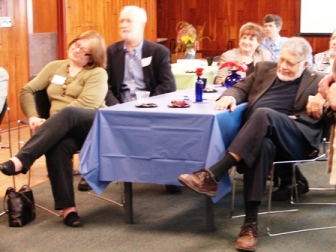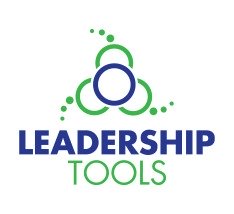Diversity-Leadership
Diversity-Leadership recognizes that cultures and preferences differ. Use this online leadership tool to adapt group processes to honor people across twelve cultural difference areas.

Diversity-Leadership Explained
Diversity-leadership means recognizing that cultural preferences differ and adapting strategies and processes that work for more group members.
Use this online leadership tool to understand and then adapt group processes to honor diversity across twelve cultural difference areas. These differences are commonly called 'diversity.'
While we are often curious and interested in others and their preferences, it is also important for leaders to know their own cultural views. Often our own preferences work on 'auto pilot' and recognizing them can assist us to improve diversity-leadership.
Leader Self-Reflection Leadership Tool
Following is a list of some differing cultural values. There is no right or wrong answer; they are statements where we would expect answers to reflect the diversity of responses from strongly disagree to strongly agree.
Mark your 'initial reaction' response response behind the statement.
Strongly Disagree SD
Disagree D
Agree A Neutral N
Strongly Agree SA
1. All people are created equal.
2. Everyone can work hard and succeed.
3. Individual beliefs and ideas come ahead of group goals.
4. Informality puts everyone at ease.
5. Direct communication is best.
6. People control the environment.
7. Competition is natural in groups.
8. Anyone can become a group leader.
9. Change is essential to progress.
10. Sticking to a schedule makes things go smoothly.
11. We must set goals to be successful in the future.
12. Conflict is inevitable in group settings.
How do you respond? How might participants in your groups respond differently? How might this affect how you lead? Can you benefit from a better understanding of differences? Engage in diversity-leadership recognizing group members may prefer either of these orientations and adapt your strategies appropriately.
Leadership Tool Responses

“When in Rome, do as the Romans” do is a familiar survival tactic for travelers. Cell phones users in their own territory are considered to be ‘home’ and when out of their territory, to be on ‘roam.’ Diversity-leadership means you know when you are in your 'home' territory and recognize how others 'roam' or experience things differently.
The following descriptions are based this coding: Home = United States dominant cultural orientation and Roam = Other Countries may exhibit this cultural orientation

Equality
Engage in diversity-leadership recognizing group members may prefer either of these orientations and adapt your strategies appropriately.
Home - There is a belief that all people are “created equal” and therefore have an equal opportunity to succeed in life. Difference is minimized. There is also an unspoken assumption that all individuals have a right and responsibility to fully participate in the public domain and to share their ideas. From this value perspective, it is perfectly normal that anyone within a community has the right and responsibility to fully participate in community decisions, no matter what their rank or status is within that environment.
Roam - Rank, status, and authority gives people a sense of security and certainty. For people from many cultures, it is reassuring to know, from birth, who they are and where they fit into “society.” Diversity recognizes differences. It’s not surprising if people come from a society where they have a low status that they are less apt to fully participate in a community dialogue or to be instrumental in the decision-making process.
Hard Work

Engage in diversity-leadership recognizing group members may prefer either of these orientations and adapt your strategies appropriately.
Home - Doing Orientation
As a human-doing, the point of life is actually to do things, be involved, and accomplish goals. The top priority is getting down to business and focus on the task. The belief is that individuals survive in the world because they get things done, generally on their own. Words and talk are suspect and cheap; they don’t put food on the table or a roof over your head. What is of most value is the practical and pragmatic over what is beautiful and inspiring. This often plays out when funds for music or art programs are cut in the community.
Roam - Being
On the other hand, a human being holds an attitude and belief that the point of life is to live and experience an understanding. Activity for activity’s sake is unimportant. Intuitive and creative thinking is most highly valued as compared to need the evidence and facts. Here the top priority is getting along with others; emphasis is on building human connections.

Individual vs. Collective Orientation
Engage in diversity-leadership recognizing group members may prefer either of these orientations and adapt your strategies appropriately.
Home - Individualism orientation focuses on the degree the society reinforces individual or collective, achievement and interpersonal relationships. (Hofstede, 2003). A High Individualism orientation indicates that individuality and individual rights are highly valued within the society. Individuals in these societies may tend to form a larger number of looser relationships with the expectation that there will be mutual gain for all parties within that relationship. The decision making model is based on individuals voting based on what they believe is best for them. Individual self-expression is common.
Roam - A Collective orientation typifies societies with close ties between individuals. These cultures reinforce extended families and collectives where everyone takes responsibility for fellow members of their group. Harmony within group relationships is emphasized over individual wants and opinions. Decisions are made using a consensus model – involving more time and input. The decision making model is based on individuals voting based on what they believe is best for the collective. Modesty and conformity to the group is the mode of operation so individual self-expression is common.

Informality vs. Formality
Engage in diversity-leadership recognizing group members may prefer either of these orientations and adapt your strategies appropriately.
Home - We tend to have an Informal approach evidenced by use of first names, casual dress, informal language and a non-hierarchical approach to others. Individualism is a strong focus on the individual. In low power distance societies like the United States people interact across class and authority lines as a matter of fact. A task orientation is common.
Roam - Other cultures have a Formal approach with unwritten rules about hierarchies, use professional titles as a sign of status, use professional language and formal dress in business settings. Collectivism, with emphasis on the group, includes is a strong sense of shared accountability and responsibility. In high power distance societies unequal status is more the norm and those with more authority tend not to interact with lower class or status unless in an authoritarian manner. A relationship orientation is common.
For example, hugging or hand-shaking may signify friendship and warmth to some and be absolutely taboo to others; saying “no” may be the beginning of negotiation or the bottom line; establishing eye contact may show sincerity or be seen as a lack of respect.

Direct vs. Circular Communication
Engage in diversity-leadership recognizing group members may prefer either of these orientations and adapt your strategies appropriately.
Home- Communication is conducted in a straight line, moving in a linear way toward the main point. "Getting to the point" is very important and the point is stated explicitly. Not getting to the point quickly is seen as a time waster.
Roam - Communication is conducted in a circular manner around the main point. The point may be left unstated because the verbal and nonverbal information provided is sufficient for understanding. Stating the point explicitly is seen as insulting the other person.
Control Environment

Engage in diversity-leadership recognizing group members may prefer either of these orientations and adapt your strategies appropriately.
Home - People consider it normal and right that humans should control nature, rather than the other way around. More specifically, people believe every single individual should have control over whatever in the environment might poten¬tially affect him or her.
Roam – People may hold a value that they need to live in harmony with nature and that it is more important to “be” than to “do”. In this regard, there is a belief that some aspects of life are predetermined, built into the nature of things. It is these aspects that may create limits and givens that cannot be changed but must be accepted – to be in harmony. Life is a very large part what happens to a person (Culture Matters).
Other values influencing power is the value of hierarchy and authority. In a multicultural setting, who participates may very well be determined by who has the greatest authority along with people who come from a more egalitarian world view and representing themselves (Hofstede, 1997).
Competition vs. Cooperation

Engage in diversity-leadership recognizing group members may prefer either of these orientations and adapt your strategies appropriately.
Home - Competition is highly valued. Many group decision processes are based on competition as the norm. For example, majority rule means that the group with the most votes wins. Individualism values (individual needs ahead of the group) play out as well.
Roam - Other cultures may find the competitive value disagreeable, especially those that promote cooperation rather than competition. They may be uncomfortable with the notion of “stepping up” to share or promote their own ideas. Collectivism (group needs ahead of individual) favors consensus and group decisions making. And, if leadership is ascribed within their cultural context, the members in the group may not be the ones to decide; it may be the elders or clan leader.

Leadership
Engage in diversity-leadership recognizing group members may prefer either of these orientations and adapt your strategies appropriately.
Home - In the United States we use the word ‘leader’ for positional and non positional roles; and we tend to use the word with a positive connotation. Low-Power Distance societies, like the United States, are where power holders and followers interact on several levels as equals. Decision making is often a group-oriented and participative activity (Hofsted,1997).
Roam - A leader is assumed to be a title of a power ruler – king, president, dictator, or ruler. A leader is the head of a clan or family; tribe or nation. Leadership is an ascribed role; not a voluntary role. High- Power Distance society leaders and followers rarely interact as equals. There is formality in relationships and people wait for direction from authority. (Hofstede,1997). There can be negative connotations to the term ‘leader’ if people have experienced hardship attributed to leaders. This makes them less likely to trust in those in authority.
Change

Engage in diversity-leadership recognizing group members may prefer either of these orientations and adapt your strategies appropriately.
Home - For many, change is seen as an indisputably good condition. Change is strongly linked to development, improvement, progress, and growth. The idea that new is better, a better way can always be found or things can be improved up. And when someone says, “But we’ve always done it this way,” the response is, “that doesn’t make it right.” In the United States, change is considered positive because of the belief in the march of progress and the pursuit of perfection. Improvements move the people closer to being perfect and while traditions can be a guide they are not inherently superior. People are quite tolerant of taking risks and unpredictability.
Roam - Many older, more traditional cultures consider change as a disruptive, destruc¬tive force, to be avoided if at all possible. Instead of change, such societies value stability, continuity, tradition, and a rich and ancient heritage, none of which are valued very much in the United States. A society where change is something to avoid, find more comfort with a relatively predictable and certain future. For societies such as this, that means well-structured and predictable situations.
Future Focus

Engage in diversity-leadership recognizing group members may prefer either of these orientations and adapt your strategies appropriately.
Home - Almost all energy is directed toward realizing that better future. The future is planned for, looked toward, and hoped for. At best the present condition is seen as preparatory to a later and greater event, which will eventually culminate in something even more worthwhile.
Roam - Some cultures who are not future oriented see planning for the future as futile or even sinful and may easily have philosophical problems with this very United States characteristic. Other time orientations include a focus on the past – or the time before now. It is a way of honoring and preserving traditional teachings, beliefs, and elders. The teachings of Confucius in China is a good example of a culture where the traditions of the sages and lessons learned are highly valued.
In the middle of these two views is a focus on the present, the here and now. The current situation is what determines where energy is exerted. What accommodations need to be made in beliefs and traditions to improve things at the present time? The past is not a guide and future implications are not considered.

Conflict and Harmony
Engage in diversity-leadership recognizing group members may prefer either of these orientations and adapt your strategies appropriately.
Home - In the United States, the dominant culture approach to conflict is to be direct with the belief that conflict can be resolved through open problem solving. In U.S. business meeting settings the dominant approach is for people to keep emotions controlled and stick to the facts.
Roam - In other cultures people use indirect speech, stories, or third party intermediaries to try to keep the conflict minimized. The second element is how a culture communicates, both verbally and with gestures. In other cultures it is important to recognize that expressing emotions and talking “with their hands” is an indication of how much they care about the person or issue.
Check out these valuable resources to improve your diversity-leadership:
Diversity and Difference Trust Building Activities
Cultural Dimensions
Collection of Diversity-Leadership Activities

Leadership Tools
Facilitation. Training. Strategic Planning.
Donna Rae Scheffert
809 Mayflower Ct.
Northfield, MN 55057
Let me assist you and your organization. Call me at 612.360.4484
